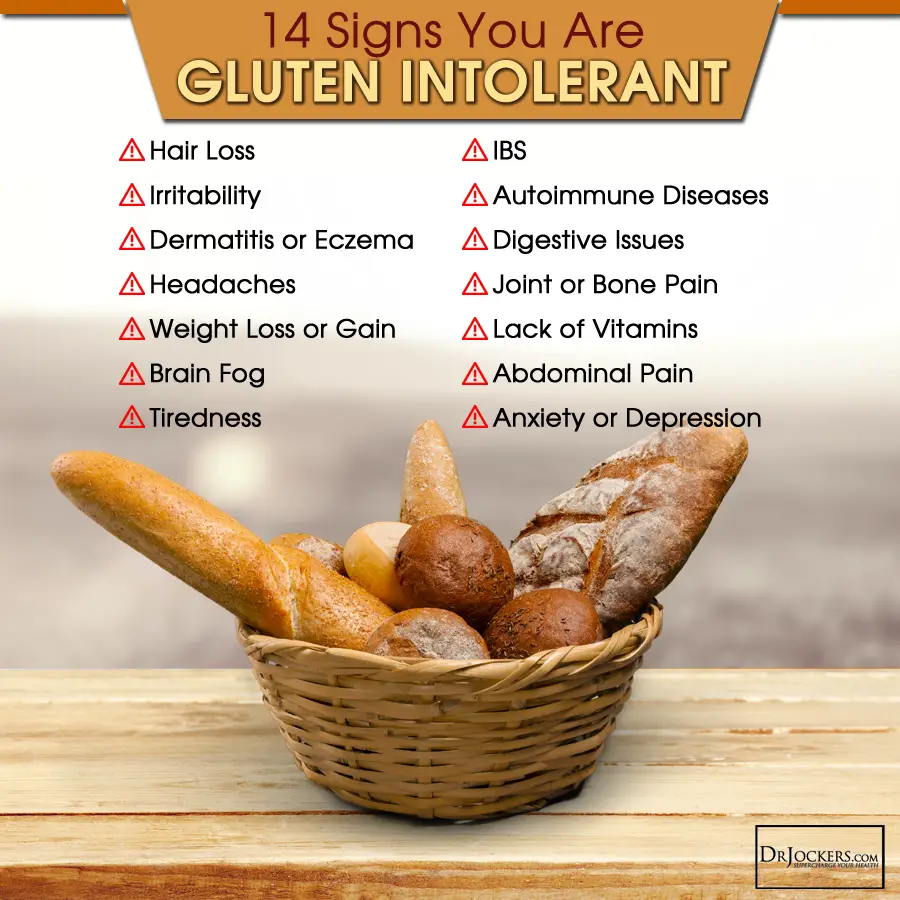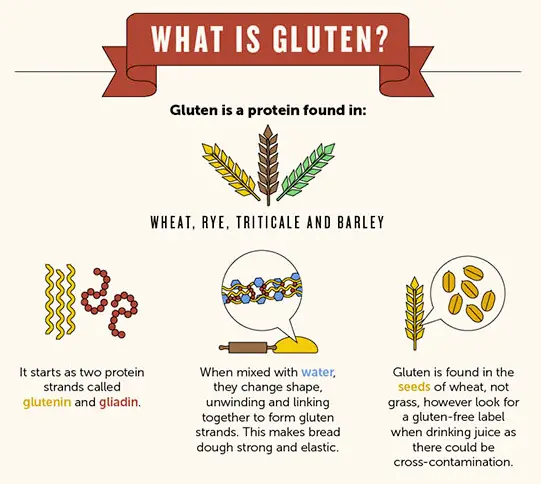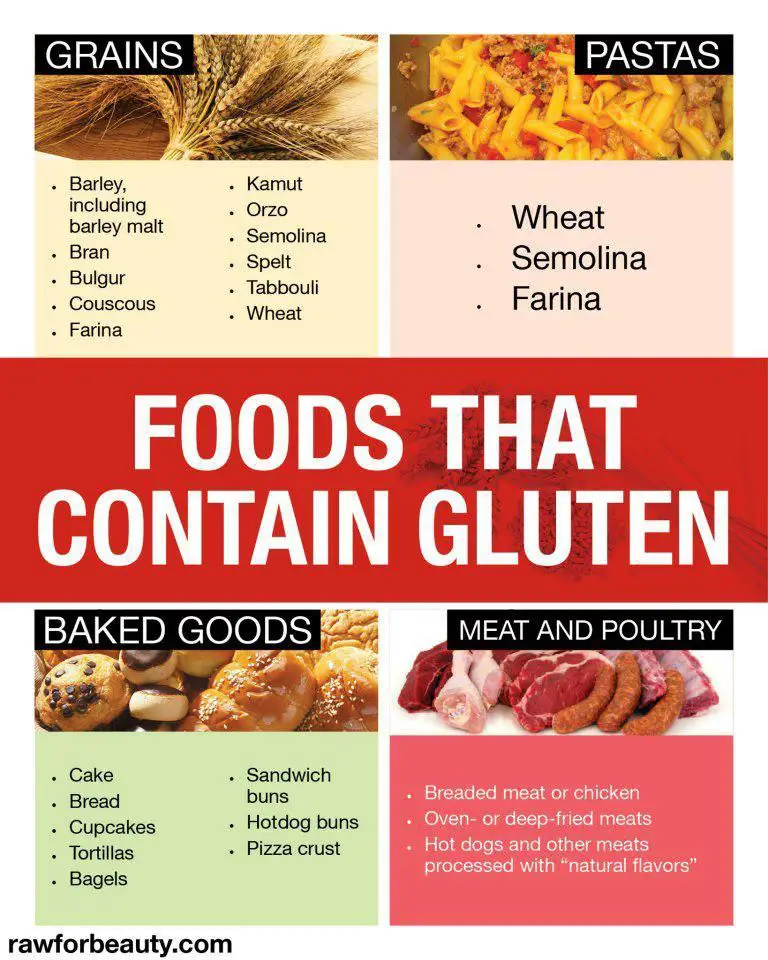Nutritional Information About Gluten
Although they’re made from wheat, concentrated gluten products are very low in carbohydrates. The nutritional information for Bob’s Red Mill vital wheat gluten flour shows that one 30-gram serving has 23 grams of protein and only three grams of carbs. It also doesn’t have very much fat, with only one gram per serving, or 1% of the recommended daily value for an average person. The nutrition profile of seitan can change depending on what the manufacturer uses to flavor it, but the brand that The Healthy tested had very similar nutritional facts to pure gluten, with a little less protein and a little more carbs because of some added sugar.
While gluten contains a similar amount of protein to meats like chicken breast, it only has a small amount of lysine, an essential amino acid . If you’re following a plant-based diet, you need to supplement seitan with other sources of protein, like beans, in order to make sure your body gets enough lysine.
Why Is Gluten So Bad For Some People
Today there are many contradictions about the effects ofgluten . Some sources claim that it is safe for everyone except people with celiac disease. On the other hand, some health experts believe that gluten is harmful to most people.
Despite these contradictions, gluten is still a part of many foods on the market today. However, in recent years a large number of people actively try to avoid gluten consumption. This fact may be due to the increase in the number of people who are sensitive to gluten or it may be because its negative health effects are known.
Know whats true about the effects of gluten on peoples bodies.
Contents
What Is Gluten Anyway
In simple terms, gluten is a protein substance inherent in wheat, rye, barley, brewers yeast, malts and a wheat-rye hybrid called triticale. It works like a glue, giving bread and pastas that spongy, chewy texture we expect helps pizza and other doughs stretch and also thickens sauces and soups. When these common foods are prepared without gluten, its fairly easy to tell the difference in texture and even taste.
Also Check: Signs You Have A Gluten Intolerance
Get The Truth About Gluten
One little protein in grains has sparked widespread confusionheres what you should know.
Millions of Americans have sworn off gluten, claiming a gluten-free diet has helped them shed pounds, boost their energy and feel healthier all around. Gluten by itself is neither harmful nor unhealthyits simply a protein found in several grains. Yet throngs of folks swear by gluten-free diets, typically avoiding bread, crackers and pasta. And thats just the start. This compound is an integral ingredient in myriad foods, such as salad dressings, soy sauce, mustard, baked beans and beer. Its widespread presence can make cutting gluten out of your diet surprisingly difficult, inconvenient, time-consuming and expensive.
Which begs the big question: Is this wildly popular trend truly beneficial to healthor at least enough so to make ousting gluten worth the trouble? More importantly, is swearing off gluten even safe?
A Gluten Paradox In Italy

When you think of Italian cuisine, more likely than not you instantly think of pizza, pasta, and bread. However, you dont hear about NCGS all over Italy.
Research shows that less than 1 percent of the Italian population suffers from the dangers of gluten related disorders. When 5 to 35 percent of Americans suffer from NCGS, you know that something must be terribly, terribly wrong.
One example is the story of an American Celiac patient who suffered from gluten intolerance but had no side effects from eating while in Italy. Taken from celiac.com Forum,How Come Gluten Didnt Bother Me In Italy?:
I recently traveled to Italy, and although Ive read they have many gluten-free options, I decided that I was going to eat whatever I wanted, even if it had gluten. When I mentioned this to my doctor, he said it actually may not bother me since the wheat outside of the US is typically less genetically modified and more natural. So after 2 weeks in Italy eating pasta daily, pizza, and all kinds of baked goods, I felt great. No headaches, upset stomach or any symptoms of gluten digestion. Has anyone else had a similar experience outside of the US? If thats the case, could I buy imported flours and pasta made in Italy that arent gluten-free and be okay eating them at home?
Recommended Reading: Fast Easy Gluten Free Meals
What Is Gluten And Why Is It So Bad
Gluten is the common protein found in wheat, barley, & rye. There are more and more people that are having health problems associated with gluten consumption. In this article, I will dive deep into the research to answer the question, what is gluten and why is it so bad?
Gluten is a sticky, storage protein that is challenging for the digestive tract because it binds to the small intestinal wall where it can cause digestive and immune system disorders. Gluten sensitivity is an epidemic that is a major contributing factor with inflammatory and autoimmune diseases .
Gluten intolerance is highly associated with inflammatory disorders of all kinds . It is also a contributing factor in many autoimmune diseases such as celiac disease, rheumatoid arthritis, type I diabetes, Hashimotos thyroiditis, autoimmune cardiomyopathy, lymphoma, and dermatitis herpetiformis among others . It is also linked as a contributing factor in asthma, allergies, & eczema .
What Is Gluten And Why Is It Bad For Some People
3 minute read time
Getting to grips with gluten can feel like a minefield, but it doesnt have to be that way.Whether youve recently been diagnosed with a gluten-related condition or youre researching for a loved one, youve come to the right place to understand gluten proteins and how to deal with them.
Don’t Miss: White Corn Tortillas Gluten Free
Autoimmune Reactions In People Without Celiac Disease
Point #6 above gave a lot of reasons why celiac disease is associated with other autoimmune diseases, but its not limited to people with celiac disease. If you thought non-celiac gluten sensitivity was unrelated to autoimmune disease, you thought wrong! This study found that a lot of people with non-celiac gluten sensitivity have autoimmune markers in their blood, suggesting that the wheat exposure might be causing autoimmune issues even without celiac disease.
One interesting aspect of this is that patients with non-celiac gluten sensitivity may have a different type of autoimmune reaction, which just underlines that celiac disease and non-celiac gluten sensitivity are two different things. But the point is that both involve potentially serious autoimmune responses.
Three Good Reasons To Go Gluten Free
You May Like: Is Naan Bread Gluten Free
The Trouble With Lectins
All grains contain lectins that protect the plant from predators. In a sense, they discourage predators from consuming the grain by attacking the digestive tracts of the creatures that consume them – and that goes for us too! The wheat lectin is particularly problematic for a few reasons.
WGA binds to the epithelial cells that line the gut and stimulates the release of pro-inflammatory cytokines. The increased inflammation and cellular damage that result are contributing factors to intestinal hyper-permeability .
The wheat lectin also has the unique ability to mimic insulin. WGA will bond with insulin cell receptors and enhance glucose transport into the liver and fat cells. This process results in our body getting the signal to store more glucose as fat and to inhibit fat-burning.
Rice Cake With Nut Butter
Gluten-free doesnt mean grain-free. Those who dont consume gluten can still eat gluten-free grains like rice and oats, and pseudo-grains like quinoa and buckwheat.
For a quick and easy snack, smear some nut butter on a rice cake. You can also add some apple slices, berries, hemp seeds, or chia seeds for extra nutrition and texture.
Recommended Reading: Are Corn Tortillas Gluten Free
Foods Avoided Vs Foods Consumed
When following a gluten-free diet, one must avoid wheat, barley, rye, and any foods that contain these grains as ingredients. There are some less obvious foods that may contain gluten as well, such as soy sauce, processed meats, soups, gravies, and beer. To properly avoid gluten, it is necessary to become an expert at reading the ingredients list on the nutrition facts label.
Wheat is the number one source of gluten in Americans diets. Think about all of the foods that normally contain wheat: breakfast pastries, cookies, cakes, and crackers, etc. Beyond the wheat itself, these foods are also often high in sugar, saturated fat, and sodium, providing large amounts of empty calories and unhealthy ingredients. While you can find almost any food gluten-free nowadays, the cake at the office or cookies in a hotel lobby are most likely not. People following gluten-free diets have no choice but to pass on these foods, saving their bodies from excess calories.
How Do I Know If It’s Celiac

If youre experiencing suspect symptoms, pinpoint the problem as quickly as possible. An elimination diet may be all you need to detect non-celiac gluten sensitivity, but its smart to rule out celiac disease just in case. The condition can be diagnosed by a simple blood test, which Dr. Auld says is inexpensive and very accurate. But this part is crucial: For the test to read accurately, you must have it done while consuming a gluten-containing diet.
Doctors can also run genetic testing to detect the genes related to celiac, HLA DQ2 and DQ8 genes. Ninety percent of people with celiac disease will have one or other of these genes, Dr. Auld says. This test can be performed while youre on a gluten-free diet.
Theres no cure for celiac disease. The only treatment is religiously following a gluten-free diet. Without the constant influx of gluten, the small intestine begins to heal and overall health tends to improve.
Recommended Reading: Is Life Cereal Gluten Free
Does Glutinous Rice Contain Gluten
Sometimes gluten shows up in unexpected places, and sometimes it isn’t there when you think it would be. According to The Kitchn, that’s the case for glutinous rice, commonly known as sticky rice. Confusingly, “glutinous” doesn’t mean filled with gluten . Rather, glutinous is a little-used word that means gluey or gummy . While gluten is sticky, it’s not the substance responsible for glutinous rice’s distinctive texture. That honor goes to a type of starch called amylopectin that traps moisture and makes rice stick together. We have amylopectin to thank for the addictive mouthfeel of treats like mochi, sticky rice cakes, and Thai mango rice.
Glutinous rice is safe for celiacs and people with other forms of gluten intolerance. If you order it at a restaurant, however, you should ask about how it was prepared, as there’s a chance it could become contaminated with gluten during the cooking process.
Does Oatmeal Have Gluten
A question many people are curious about. Oats are a type of grain, and like other grains, they have gluten. Gluten is a protein that can be found in oats and other grains. When it comes to oats, there is some debate as to whether or not they have gluten. Some say that yes, oats do have gluten, while others say that no, oats do not have gluten. The answer to this question is likely not as clear as people would like it to be.
Don’t Miss: Gluten And Sugar Free Diet
Double Trouble: Wheat Germ Agglutinin
Another one for the non-Celiac crowd: wheat germ agglutinin is an inflammatory, immune-disrupting protein found in wheat and despite the similar name it isnt the same thing as gluten. Wheat germ agglutinin can provoke an inflammatory response in gut cells and disturb the natural immune barrier in the gut, making the gut more permeable to things that dont belong in your blood.
Again, this is totally separate from the problem of gluten. Obviously, gluten and WGA usually come as a package deal, because theyre both found in wheat, but you can have trouble with WGA even if you had no reaction to a gluten elimination challenge.
Is Gluten Bad For You A Critical Look
Going gluten-free may be the biggest health trend of the past decade, but theres confusion over whether gluten is problematic for everyone or just those with certain medical conditions.
Its clear that some people must avoid it for health reasons, such as those with celiac disease or an intolerance.
However, many in the health and wellness world suggest that everyone should follow a gluten-free diet regardless of whether theyre intolerant or not.
This has led millions of people to give up gluten in hopes of losing weight, improving mood, and getting healthier.
Still, you may wonder whether these methods are backed by science.
This article tells you whether gluten really is bad for you.
1 ).
Various prolamins exist, but all are related and have similar structures and properties. The main prolamins in wheat include gliadin and glutenin, while the primary one in barley is hordein .
Gluten proteins such as glutenin and gliadin are highly elastic, which is why gluten-containing grains are suited for making bread and other baked goods.
In fact, extra gluten in the form of a powdered product called vital wheat gluten is often added to baked goods to increase the strength, rise, and shelf life of the finished product.
Gluten-containing grains and foods make up a large portion of modern-day diets, with estimated intake in Western diets around 520 grams per day .
Gluten proteins are highly resistant to protease enzymes that break down proteins in your digestive tract.
6 ).
Don’t Miss: Gluten Free Drug List 2016
Is There Any Wheat Or Gluten In Whey Protein
Naturally, whey protein does not contain any wheat protein or gluten. Whey protein is a complete protein, containing all of the essential and non-essential amino acids required by the human body. Whey protein is bland in flavor, making it easy to incorporate into gluten-free recipes.
How is the protein in whey protein made?
Surprising Facts You Need to Know. Making whey protein is likely simpler than you think. It starts with cows milk, which is heated and separated into curds and liquid whey. The liquid whey is then shipped to a manufacturer, filtered, and dried into a powder form that we know as whey protein.
What is the composition of whey in milk?
Composition. Whey protein is the collection of globular proteins isolated from whey. The protein in cows milk is 20% whey protein and 80% casein protein, whereas the protein in human milk is 60% whey and 40% casein. The protein fraction in whey constitutes approximately 10% of the total dry solids in whey.
Are there any health benefits to eating whey protein?
Whey protein is commonly marketed as a dietary supplement, and various health claims have been attributed to it in the alternative medicine community. Although whey proteins are responsible for some milk allergies, the major allergens in milk are the caseins.
Potential Harms Of A Gluten
Gluten-containing foods make up a large component of several diets, including the Western diet. These foods are relatively easy to cultivate and prepare, and represent readily available and cost-friendly options to meet the caloric demands of large populations. Gluten is also a common additive to prepared foods due to its physical properties and palatability. With the popularity of GFDs, it is important to understand the nutritional quality, potential costs, and availability of this diet as well as the effects that excluding gluten can have on the population and food industry.
Recommended Reading: Vegan Gluten Free Chocolate Cake
What About Everyone Else
There is no compelling evidence that a gluten-free diet will improve health or prevent disease if you don’t have celiac disease and can eat gluten without trouble. Of course, future research could change this. We may someday learn that at least some people without celiac disease or symptoms of intestinal disease are better off avoiding gluten.
Is This Diet Safe

Though many health professionals suggest otherwise, its safe to follow a gluten-free diet even for people who dont necessarily need to do so.
Cutting out wheat and other gluten-containing grains or products will not cause adverse health effects as long as these products are replaced with nutritious foods.
All of the nutrients in gluten-containing grains, such as B vitamins, fiber, zinc, iron, and potassium, can easily be replaced by following a well-rounded, whole-foods-based diet consisting of vegetables, fruits, healthy fats, and nutritious protein sources.
You May Like: Is Campbell’s French Onion Soup Gluten Free
So Should Everyone Go Gluten
Although a gluten-free diet is recommended for people with Celiac disease and certain digestive conditions , wheat allergy and gluten ataxia), it definitely is not for everyone. It’s highly unlikely that gluten-tolerant individuals would benefit from a gluten-free diet .
Eliminating gluten from our diets may also eliminate some foods that are great for our health, like whole grains and soy, which provide us with essential vitamins and minerals. A study even found out that people on a long-term gluten-free diet may increase their risk of cardiovascular issues .
Additionally, pursuing a gluten-free diet often reduces calcium, B-vitamins and fibre from our overall diet, while increasing the intake of fats and simple carbohydrates. That’s because people switching to a gluten-free diet often reach for processed, gluten-free foods initially. For example, gluten-free bread would provide you mainly with fats and carbohydrates with lower protein content .
In fact, most of the gluten-free alternatives of baked goods have a higher sugar content and more calories as compared to their gluten-containing counterparts. Their continuous consumption may lead to health issues like obesity, type 2 diabetes and high blood pressure, amongst others .
